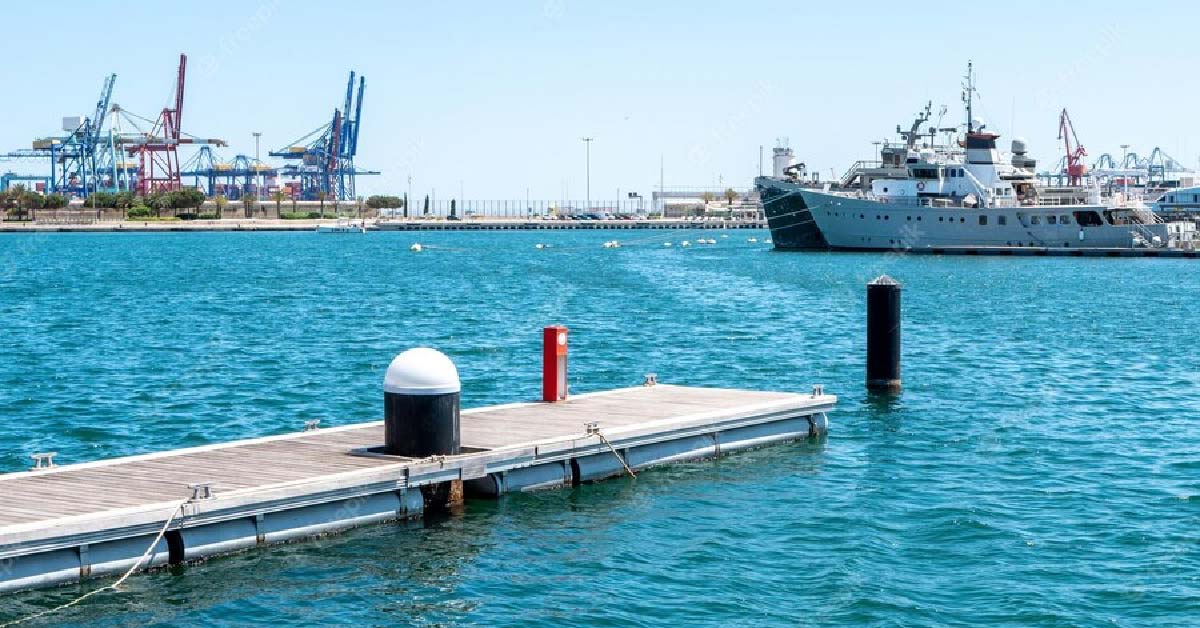If lands are dangerous with inhabitants around, imagine how dangerous seas will be without the habitation and lying empty for predators to lurk around. While we try to keep ourselves afloat and steer clear of the beasts inside the seas, let’s also fight to protect ourselves from those at the surface level.
A vital element of Private Marine Security Companies, like DoricNG, is Port Facility Security Assessment, which also goes PFSA. With PFSA, we can find out where the highest level of risk or threat is coming from and what security measures we must take to eliminate them.
PFSA refers to the risk analysis that the port facility needs to dictate the most threatened parts around the port. When updating your Port Facility Security Plan, PFSA is an invaluable prospect that must never be forgone. This article will discuss all Port Facility Security Assessment, such as how it is done
Table of Contents
Who Conducts Port Facility Security Assessment
Without a Port Facility Security Assessment, you can’t create a Port Facility plan. So who should conduct the Port Facility Assessment? The Contracting Government of the port’s territory is responsible for this assessment. This government may create another sector within its wings that will take accountability for the entire assessment.
Before hiring anyone in this high-intensity program, there must be port facility security officer training. This officer has to be dutiful in constantly checking in on the assessments while reviewing and updating every minor information and threat visible in the vicinity.
Features of Port Facility Security Assessment:
- Identifying and evaluating assets and infrastructure.
- Identifying any incoming or probable threats to assets and infrastructure.
- Identifying, notifying, and prioritizing which assets to secure first and which procedures to follow firsthand will reduce vulnerabilities the fastest.
- Identifying vulnerabilities and weaknesses in the maritime company officers and system.
What Port Facility Security Assessment[PFSA] Addresses:
- Bodily safety
- Structural durability
- Personnel defense system
- Procedural guidelines
- Radio and telecommunication scheme
- Adequate transportation process
- Utilities
- High-risk areas have been designed to harm individuals, observe confidential activities, and seize information.
What Port Facility Security Requires
- Understanding current security threats and sequence
- Recognizing and detecting weapons, substances, and devices
- Identifying suspicious behavioral patterns of people without discriminating
- Identifying security evading measures and techniques
- Identifying security breaching procedures before an incident has occurred
- Recognizing signs and effects of shell or grenade damage
- Understanding port facility security and port business practices and ethics
- Understanding probability, Disaster prevention, and mitigation
- Ensuring safety precautions
- Ensuring quality computer and network infrastructures, as well as radio and telecommunications facilities
- Ensuring construction and transportation
- Ensuring Shipping and port activities
Assets to Protect:
- Entries, Permits, Methods, harbors, turning and berthing spaces
- Cargo installation, ports, cargo bay, equipment
- Systems such as those used for distributing electricity, transmitting messages by radio or telephone, and connecting devices via connectivity
- navigational aids and port traffic control
- utilities, transportation pipelines, and supply systems
- Highways, railroads, and bridges
- Pilot boats, tugs, lighters, and other container port vessels
- Equipment and systems for monitoring defense condition
- The seas around the port complex.
PFSA should do consultations to find out the following:
- Like the vessel traffic, sectors in the port facility can become easy targets.
- The potential casualties, property destruction, and commercial downtime, including delays in transportation that might result from an assault on the port itself
- The intent and capabilities of the attacker or bandit
- The different categories of attack that took place
What occurrences are considered threats:
- Any type of damage or destruction of a port or vessel by explosives, arson, wreckage, or vandalism.
- Hijacking incidents of the ship or a ship passenger.
- Cargo meddling, fiddling, or damaging the ship equipment or how it runs.
- Entering the vessel without any permit with or without stowaways.
- weapon trafficking, including the trafficking of nuclear weapons
- Using a ship to carry traffickers, pirates, and other felons escaping jail time.
- Operating a vessel that disguises its weaponized nature
- Ship blockage and barred entrance
- Nuclear, biological, or chemical invasion
Security measures to take:
- Security studies, analysis, and inspection
- Consult and Querying port facility owners and operators when appropriate
- Records of past security breaches
- Activities conducted inside the port
How to Identify Vulnerabilities
- The access to the waterside and shoreside of the port is open
- Odd move where ships are berthing
- The structural integrity of the piers, structures, and other parts of the port is lost
- Breach in the security measures and procedures of identification method or port operations.
- Precautions for the Security of Radio and Telecommunications Equipment, Port Services, Utilities, and Related Information Technology Infrastructure.
- Identify nearby regions that might be used in an assault.
- contracts already in place with private security firms providing port/harbor area patrolling
- Identify any regulations that are at odds with security protocols.
- Identify any facility that is at odds with security duty assignments.
- Restrictions in enforcement and personnel duties
- Inadequate training and drills
- Inadequate or irregular security alerts are sent out, with practicing control measures and audits.
Verdict
The purpose and importance of port facility security assessment are paramount to successful shipping and, as a result, a successful business. Without a proper assessment, port facility security plans can’t be drawn. And without a plan, we never know which procedure to use on which part of the port.
What’s a worse idea is that there could be a bandit hiding in the cargo, and we would never know once again. So learning about the officers conducting the assessment, the features of the assessment program, and the port facility security assessment example your chosen PMSC provides is vital to your vessel and crew safety.
Make sure your PMSC does a port vulnerability assessment too. As for DoricNG, it does everything in the port facility security assessment checklist. DoricNG is your affordable PMSC exempt from hidden charges, with extended responsibilities and security measures. Contact us for more info!



